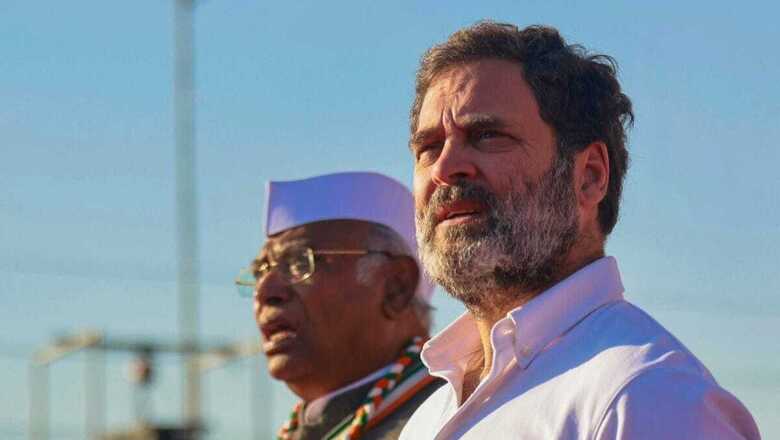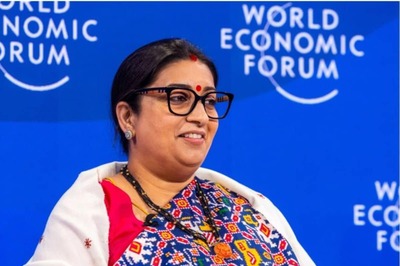
views
The 2024 Lok Sabha elections marked a crucial turning point for the Congress. After over a decade, the party managed to secure close to a hundred seats, a significant improvement compared to previous performances. However, while this resurgence may seem impressive on the surface, it is essential to delve deeper into the various critical aspects where the Congress failed to deliver.
Despite the uptick in the seat count, the Congress’s performance was lacklustre in several states where it was previously strong. For instance, in Madhya Pradesh, a traditional Congress bastion, the party suffered a severe blow by losing crucial seats such as Chhindwara. This constituency had been a stronghold for Kamal Nath, and its loss indicates deeper structural issues within the party’s state-level organisation. In Karnataka, despite being in power, the Congress failed to translate its administrative control into electoral victories, highlighting a disconnect between governance and voter sentiment.
The 2024 election results also revealed an undercurrent of anti-incumbency against the BJP. Yet, the Congress failed to capitalise on this sentiment effectively. In several states, the Congress’s role as the principal opposition was not strong enough to convert public discontent into votes. This failure to harness anti-incumbency sentiments indicates a gap in the party’s strategic approach and its ability to present itself as a viable alternative to the ruling party.
Moreover, the Congress’ alliance with regional parties in states like Delhi proved disastrous. In Delhi, the Congress formed an alliance with the Aam Aadmi Party (AAP) and they contested all seven seats. The alliance did not win a single seat, demonstrating a significant miscalculation in coalition dynamics and voter preferences. This poor performance in coalition politics extends beyond Delhi, affecting the Congress’s prospects in other key states.
The Congress has touted initiatives like the Bharat Jodo Yatra, led by Rahul Gandhi, as pivotal in mobilising grassroots support. However, it remains questionable whether the positive outcomes in some constituencies were genuinely due to these efforts. The effectiveness of such campaigns in translating into widespread electoral success is debatable and needs closer scrutiny.
Another critical point of concern is the leadership dynamics within the Congress. Mallikarjun Kharge was the party president during the elections, yet the campaign prominently featured the Gandhi family, particularly Rahul Gandhi. Post-election, Rahul Gandhi has been appointed as the leader of the opposition in the Lok Sabha. This focus on the Gandhi family, rather than a broader leadership framework, may contribute to the party’s ongoing struggles to present a united and diversified leadership front.
These setbacks highlight the multifaceted challenges facing the Congress. While the party has made some gains, it must address these underlying issues to position itself as a robust contender in future elections.
Madhya Pradesh Loss
The Congress party’s poor performance in Madhya Pradesh in the 2024 Lok Sabha election is alarming and a cause for concern. The party did not win a single seat in the state. The loss is even more striking in Chhindwara, a traditional Congress stronghold and the seat of party leader Kamal Nath’s son, Nakul Nath. Chhindwara has been a Congress bastion for decades, and Nakul Nath’s defeat is a significant blow to the party.
The reasons for the Congress’s poor performance in Madhya Pradesh are multifaceted. One major factor is the party’s inability to connect with the youth and rural voters. The BJP, on the other hand, has been successful in mobilising these segments of the electorate. Additionally, the Congress party’s internal conflicts and lack of strong leadership at the state level have also contributed to its poor performance.
The loss in Chhindwara is particularly significant as it highlights the erosion of the Congress’s traditional support base. The party’s failure to adapt to changing political dynamics and its inability to address local issues have led to its decline in the state. The Congress needs to introspect and reassess its strategy to regain its lost ground in Madhya Pradesh.
Karnataka Worry
The recent election results have exposed significant weaknesses within the Congress party in Karnataka, despite its control of the state government. The party’s failure to secure a substantial number of parliamentary seats highlights several critical issues. Despite winning the state assembly election a few months ago, the Congress only secured nine of Karnataka’s 28 Lok Sabha seats—the same number as in the previous election. This stagnation suggests an inability to expand its voter base.
Firstly, infighting has plagued the party. Factionalism within the state Congress has been a persistent problem, with prominent leaders often at odds with each other. This disunity was evident in the run-up to the elections, undermining the party’s campaign efforts and confusing voters about its leadership and vision. The tussle between CM Siddaramaiah and deputy CM DK Shivakumar is indeed troubling for the party cadres.
Secondly, there is discontent against the state government’s performance. Despite being in power, the Congress-led government in Karnataka has faced criticism over its handling of key issues such as infrastructure development, unemployment, and public services. This dissatisfaction translated into a lack of support at the national level, as voters expressed their disapproval by not backing Congress candidates for the Lok Sabha.
Poor Ally Choices
The general elections highlighted significant strategic errors by the Congress party, particularly in its choice of allies. These missteps played a crucial role in its poor performance, undermining its efforts to present a united front against the BJP.
In Delhi, the Congress entered into an alliance with AAP, hoping to consolidate the anti-BJP vote. However, this alliance backfired spectacularly. The two parties failed to synergise their campaign efforts effectively, and their differing political philosophies confused voters. Historically, the Congress and AAP have been rivals in Delhi politics, and their sudden collaboration did not resonate well with the electorate. This confusion and lack of coherent strategy led to a complete rout, with the alliance losing all seven seats to the BJP. This outcome starkly highlighted the pitfalls of allying with a party that has a conflicting voter base and strategic priorities.
In West Bengal, the Congress formed an alliance with the Communist Party of India [Marxist] (CPI[M]), aiming to counter the dominance of both the BJP and the Trinamool Congress (TMC). This coalition, however, failed to gain traction. The ideological differences between the Congress and CPI(M), combined with their historical enmity, diluted their appeal. The voters, instead of rallying behind this alliance, perceived it as an opportunistic move lacking genuine unity of purpose. The result was a dismal performance, with the Congress-CPI(M) alliance failing to win any seats, allowing the TMC and BJP to dominate the electoral landscape.
These alliances underscore a broader issue within the Congress: the inability to form effective and strategically sound coalitions. The choice of allies seemed more reactive than proactive, lacking a clear understanding of ground realities and voter sentiments. Rather than bolstering its position, these alliances fragmented the Congress’s support base and led to electoral defeats in key battleground states.
Failure To Galvanise Cadres In All States
The Congress party’s dismal performance in the 2024 elections can be attributed to its failure to galvanise its cadres across all states. Despite having a large grassroots presence, the party was unable to mobilise its workers and supporters effectively, leading to a lacklustre campaign.
One major reason for this failure was the party’s inability to project a unified and strong leadership. The lack of a clear hierarchy and decision-making process led to confusion and demotivation among cadres. Additionally, the party’s outdated organisational structure and lack of technological adoption made it difficult to reach out to workers and voters effectively.
Furthermore, the Congress’s inability to empower its state units and give them autonomy also led to a disconnect between the central leadership and grassroots workers. The result was a lacklustre campaign that failed to inspire voters, leading to a significant decline in the party’s vote share. To revive itself, the Congress must reform its organisational structure, adopt technology, and empower its state units to galvanise its cadres and regain its lost ground.
The author, a columnist and research scholar, teaches journalism at St. Xavier’s College (autonomous), Kolkata. His handle on X is @sayantan_gh. Views expressed in the above piece are personal and solely those of the author. They do not necessarily reflect News18’s views.



















Comments
0 comment